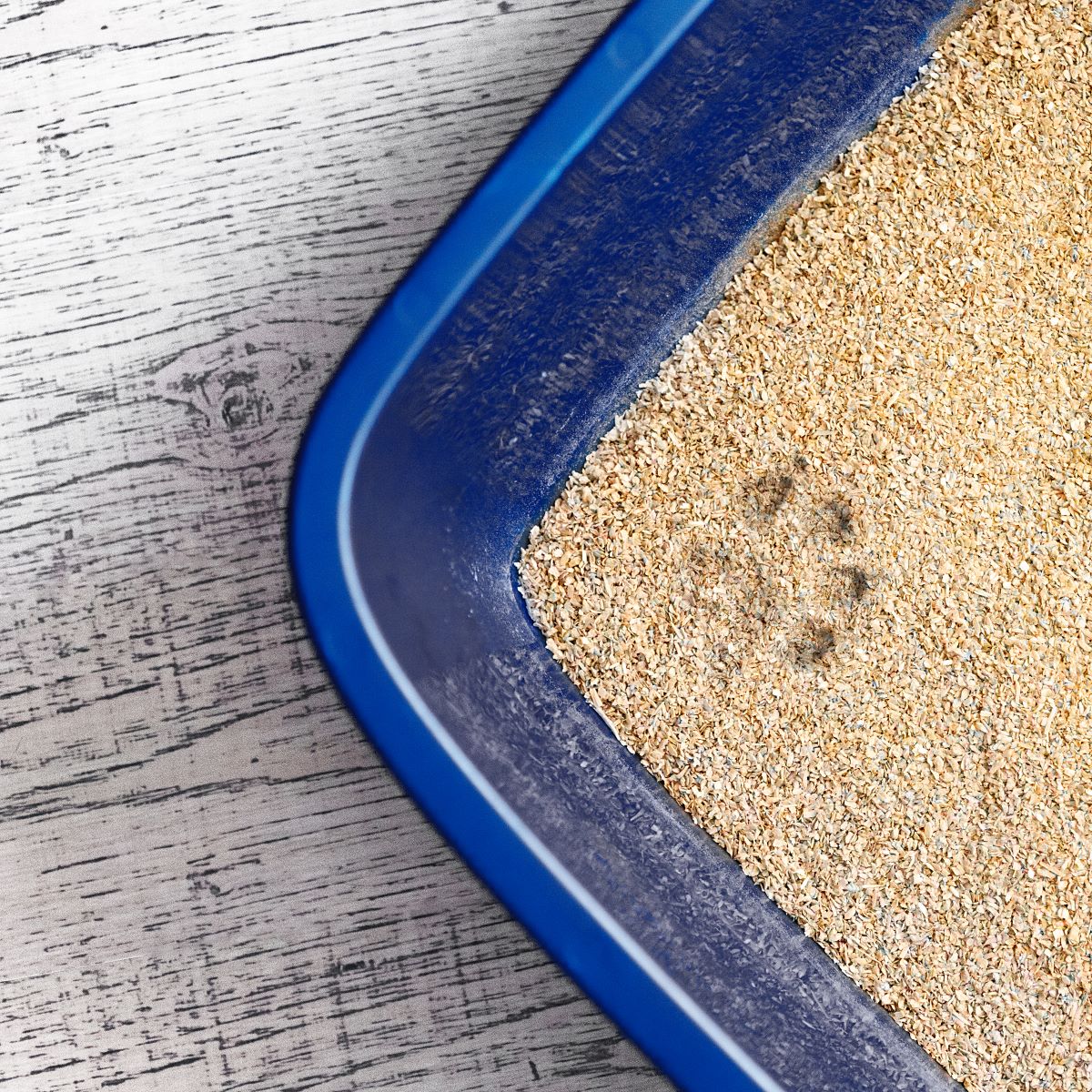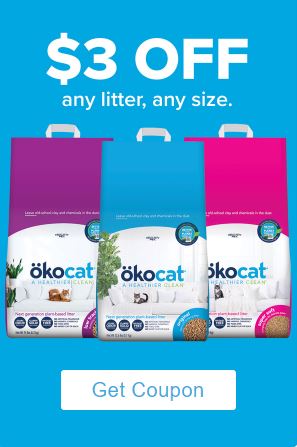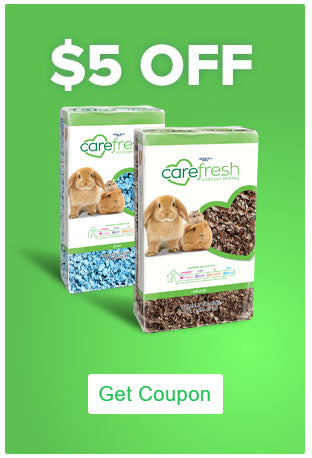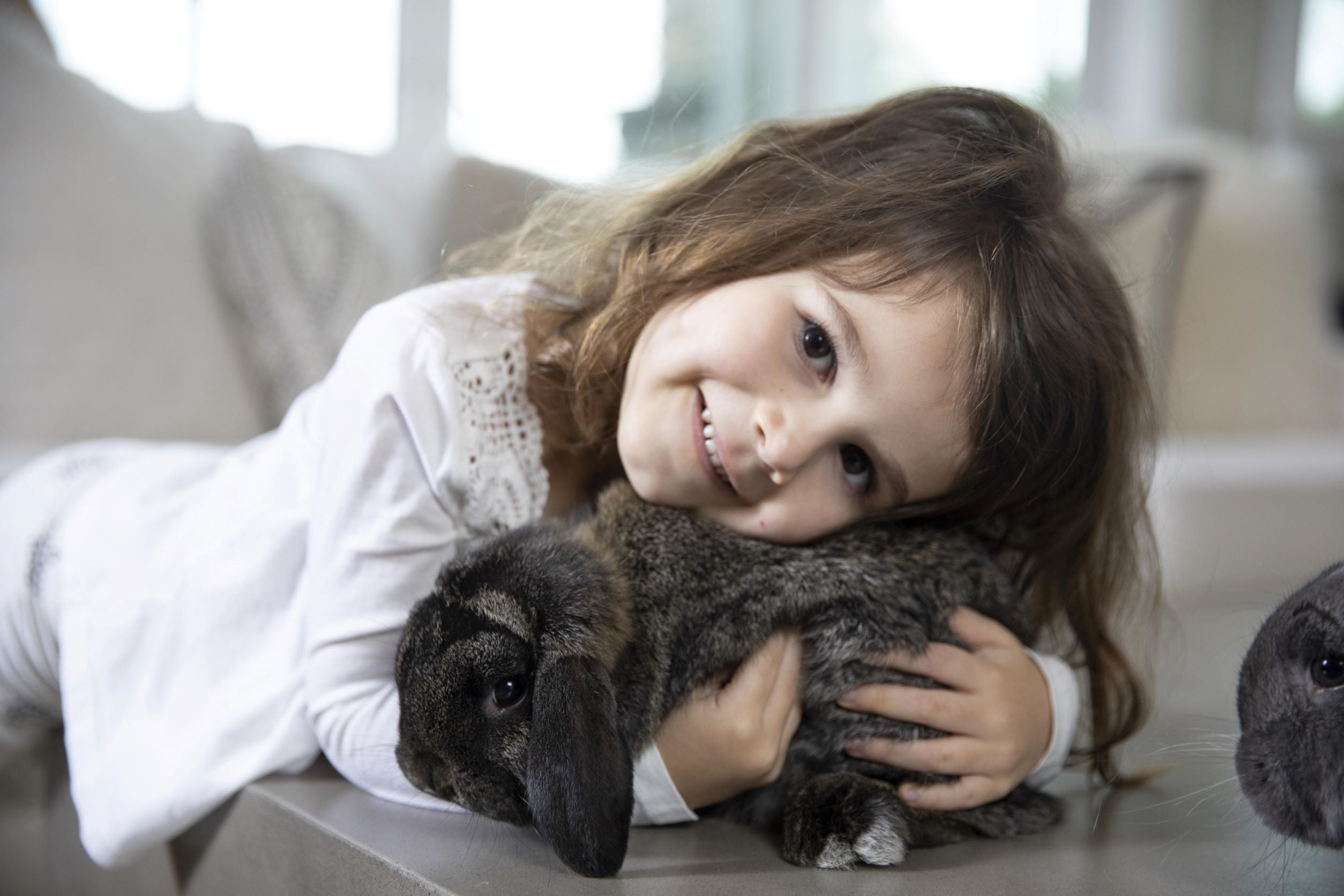5 Easy Ways to Make Your Cat Litter Last Longer and SAVE Money
Let's face it, most everything is more expensive these days and that includes cat litter. With the rising cost of labor, packaging and shipping, manufacturers have had to raise prices to help offset these as much as possible.
We are here to help you SAVE on your cat litter budget! Litter is not something you can do without and not something you want to buy the cheapest kind you can find. We've all been to "that" house - the one that just smells awful the moment you walk in the door.
Here are 5 easy ways to use less and spend less on cat litter.
Use a high quality, natural clumping cat litter
A high quality clumping cat litter with great odor control is imperative to making it last longer. The clumps allow for easy daily scooping to remove only the soiled litter and leave the rest. Good odor control helps to keep the space smelling fresh without needing to completely throw out all the litter and replace it with all new litter.
ökocat natural wood clumping litter works so well, you won't have to change the entire litter box every week, saving time and money. It really is a litter that lasts longer due to its superior all natural absorption capabilities and odor control. With regular scooping, the base litter can last up to 7 weeks!
Read Expert Review
Simply add new litter as needed after you scoop, keeping about 2-3” in the tray at all times. Plus when cleaning the litter box, remember that ökocat is both biodegradable and compostable – making it better for the planet.
One thing to keep in mind is that cats generally don’t like any change, so if you’re switching to a new litter like ökocat, you should start by transitioning slowly. Learn more >>>
Get the right slotted scoop for less waste
It's important to use a slotted scoop that is best suited for the texture of the litter. No need to get an expensive scoop, just make sure the slots are large enough especially if you are using a pellet litter like ökocat less mess.
You can find a large-slotted pellet scoop on many online sites. It is especially helpful when the slots in the scoop are located at back, this allows the unused litter can easily fall back into the litter box. If you have a plastic scoop and need larger holes, just use a wire snipper or sharp scissors to carefully cut out pieces.
Recommendations:
While we recommend any scoop with large slots, the top three scoops that are compatible with all varieties of ökocat litter are the Litter-Lifter Pellet Scoop, and BasicForm Cat Litter Scoop or modify a plastic one, watch how >>> https://www.youtube.com/watch?v=SIQBjH9Qt0g.
Place a wide mat or rug under the litter box
All cat litter tracks to some extent which means good litter gets outside the litter box. A litter mat will help catch the litter and then easily shake it back into the box or just use a broom and dust pan. Even an old rug or towel works great as well. No need to purchase a special one.
Learn more about how to prevent tracking >>>
Fill the box and scoop often
Don't get skimpy when filling the litter box. We recommend 2-3 inches to provide enough depth for the clumps to form and rise to the top, leaving the bottom clean, no scraping or dumping needed. Don't fill it up too much though if your cat is a digger or a kicker or takes half the litter with them out of the box. A high-sided litter box works great to prevent that.
It's best to scoop at a minimum of once per day and remove any feces as soon as possible. This helps to keep the litter smelling fresh and therefore lasting longer.
Look for discounts and coupons
We offer a printable coupon on our website here to print out each week if needed. Or if you order online, signing up for autoship can save you 5% or more on each order. Most retailers run different promotions throughout the year such as Buy One Get One 50% OFF which is the perfect time to stock up and SAVE.
Some small pet stores participate in the Astro Loyalty Rewards program for many pet products. ökocat as a Buy 6 Get 1 FREE! Check with your local independent pet retailer to see if they have the Astro program.
We hope these quick and easy tips help you save money on cat litter. Use less, spend less, clean less with ökocat natural litter today!
Read MoreReduce Your Waste - How to Compost ökocat Natural Litter
Did you know that ökocat litter is 100% biodegradable and compostable? ökocat litter is an all-natural plant-based cat litter, which allows it to be returned from where it came—the earth!
Not only are we committed to making sustainable products, but we also strive to produce minimal waste and help you do the same! Did you know that roughly 80% of the items buried in landfills in the United States could be recycled or composted? Landfills are one of the largest contributors to soil pollution.
Traditionally when cleaning the litter box it is common to simply toss the old litter into the trash. However, composting has recently become a great way to reduce household waste. ökocat litter users who compost their old litter can sleep better at night knowing that they are creating a smaller carbon footprint for your furry friend.
How does it work?
Organic waste will break down naturally if given enough access to oxygen, allowing microorganisms to feed on the organic materials, breaking it down into usable compost! This is called aerobic decomposition, organic materials converted to compost can be used as a soil amendment, improving the quality of your soil by adding essential plant nutrients.
In landfills, waste lacks access to oxygen causing decomposition to take much longer and producing lots of greenhouse gasses like methane and takes up so much space!
How do I start a home compost?
If you are interested in starting a home composting system, do your research to find the right composting system for your home – there are tons of methods out there that will require different amounts of space and even work on your end. The basic principles of creating healthy compost are the same, it’s critical to practice good composting standards for optimal aerobic decomposition. This means stirring, turning, watering, checking the temperature, and covering your compost every few days.
Make sure there isn’t too much of one type of organic material in your compost pile, you want an overall balanced content. Variety is the spice of life, and that holds true to your compost pile as well! It does take some effort but it’s well worth it in the end and after a few months, your compost will be ready to be used in your happy and healthy garden.
If you have any questions or concerns regarding composting at home, we recommend checking your local ag regulations, reading more through the tips at EPA.gov, or checking your state regulations.
Can I compost poo? It depends.
Many of the compost blends you can buy on the market will contain manure from animals like cows and horses. These animals are herbivores, meaning their waste will only contain plant matter and this creates amazing compost!
So the rules of thumb for composting your pet’s waste is: herbivores only! That, unfortunately, means no for composting your cat's poo.
Cat parents can still compost their excess litter but should remove the solid waste from the used litter and properly dispose of with the use of a biodegradable bag. The feces of any carnivorous animal may contain harmful bacteria and should NOT come in contact with anything edible. After removing any solid waste, you can safely compost the rest of the litter.
Composting How-to:
Place litter on your compost heap, add some straw and mix it all together.
Allow this to sit with other compostable items, turning the compost as needed to allow for proper aerobic decomposition.
Each composting system has different requirements for turning and tending, so make sure to tailor these steps to your specific system.
Depending on the size of your pile and your method of composting, it can take anywhere from two to six months for your compost to be ready to use and mixed into your garden.
Important Tips for Success:
Do not compost the waste of any animals who are ill, contagious, or taking medication, as these unwanted elements may wind up in your soil.
Do not compost the feces of carnivores or omnivores
Keep your compost pile balanced
Don’t want to Start your Own Composting System?
What if I don’t want to start a home compost, but don’t want to throw my excess litter into the garbage?
If you are not interested in creating your own home compost bin or don’t have the available space, you may be able to use a yard waste bin or simply bring your compostable materials to local farms or a nearby community garden. Be sure to ask first if they will accept compostable materials with pet waste and what the requirements are.
Most waste management companies have a commercial composting facility, especially if you live in a larger town or city.
If you are struggling to locate one, we simply recommend googling “composting facilities near me”, give them a call and ask:
If they provide a waste-management bin and the times they pick up compost
If they do not pick up, when and how your compostable materials can be dropped off
Any regulations of what should/should not be included in your compost materials
The cost associated with working the yard-waste management
Any additional benefits they provide (such as finished compost at a reduced price).
So what are you waiting for? Start composting your used ökocat litter today!
Read MoreKitten Care 101: Bringing Home your New Kitten
So you’ve decided the time is right to welcome in a new furry member of the family? Who doesn’t want a kitten – they are a lot of fun and there is definitely no shortage on cuteness, but they are a big responsibility as well. Some things you’ll want to consider before adopting your net cat; would a mature cat be better suited to your lifestyle or do you have the time and energy needed to raise a kitten? Should you adopt more than one cat to offer them some companionship? Are you willing to commit to being a pet parent for the full length of a cats life? The average lifespan for an indoor cat is around 15 years! So before you decide between adopting a kitten or a more mature cat – make sure you are prepared for the commitment that comes with raising a kitten.
So what do you need to know to make sure you start off on the right paw with your new kitten? Follow along and we will make sure you are set up for success!
Before Adoption
Before you bring home your new kitten, there are some things you will want to get squared away to ensure a smooth transition into your home and family!
Find a vet
One of the most important steps to take first is to get set up with a good veterinarian. It is a really good idea to take your new kitten in for an exam right away. They will be able to check your cat for any health concerns and answer any lingering questions you may have on providing your kitten with the very best care – like selecting the most nutritional food or litter training tips.
Supplies
Before you bring home your new kitten, you will want to make sure you are well stocked on everything your new friend will need.
Cat food: do your research or consult your vet to select the perfect food for your kitten
Cat box & litter: ökocat wood clumping cat litter has you covered with 4 different varieties to meet your needs as a new kitten parent.
ökocat super soft is a great litter to start with for new kittens and their tender paws
ökocat dust free for kitties with sensitive noses or allergies
Cat carrier: essential item for safe travel and trips to the vet
Scratching post: avoid your cat tearing up your furniture by offering them a scratching post or cat tree
Toys: toys provide your cat with a great way to get out their kitten energy,
form bonds with you, and redirect their uses to play by scratching you or your furniture
Food & water bowls
Collar with bell and ID tags: especially important if you plan to let your cat outside, the bell will help warn away any birds in your yard
Grooming supplies: a brush and nail clippers are essential tools to keep your cat’s fur unmated and their claws trimmed to avoid nasty scratches
Ready your home
One last thing to check of the “To Do List” before you bring your kitten home, is to make sure your space it ready for them! Kittens are wild little creatures. They are curious, feisty, and full of energy and will be sure to keep you on your feet. So take stock of your home, and put away breakables and anything that looks like an accident waiting to happen. Those wiley cats love to munch on those houseplants, but there are many that can be toxic to cats. Luckily ASPCA has created a list of toxic houseplants to help you keep your fur friends safe.
Welcome Home
It is finally time to welcome your new kitten into their forever home! It is easy to get caught up in the excitement of having a new pet, but remember to go slow. Your kitten will need to time to adjust and feel safe and comfortable in their new home.
The best way to help them with this transition is to set up a designated space for them to get acclimated to before you let them roam freely. This area should be away from the hustle and bustle of the rest of the house and full of any essentials they will need to be comfortable – food and water, a comfy bed, and a litter box.
Start by placing their carrier in the room, leaving the door open for them to leave when they feel ready. Patience will be the golden rule here. Give your new friend the time and space they need to get used to their surroundings and their new family – you will all be cuddling and playing together in no time!
Read More7 Top Reasons Why Cats Make Great Pets
Yes, cats do have a mind of their own but they can also be very fun and playful and are generally easier to care for than dogs or other pets.
1. Cats Are Wonderful Companions
Cats can be very independent but they also like to just hang out or sit on your lap and purr. There is nothing better than a cat purring on your lap after a long day. Usually they are as affectionate and loving as dogs, as long as it's on their terms, and they don't require a walk every day. They are soft and fit perfectly in your lap.
2. Cats Are Great for Apartments
Apartments are more likely to allow cats than dogs. They require less space and are generally fine with living in a smaller home without having to go outside.
Because cats use the litter box and don’t need to be taken outside to use the bathroom or to exercise, it is easy to keep a cat in upper-level apartments or even high-rises.
3. Cats Are Fairly Low-Maintenance
Kitties are mostly self-sufficient since they don’t need to be taken outside multiple times a day for bathroom and exercise walks. This also means less dirty paw prints and cleaning. Plus, there's no need to spend a lot of time on training after they learn to use the litter box.
Though cats still need love and attention just like dogs, they don’t require quite as much interaction as dogs. A cat is content to curl up next to you while you work, while a dog may demand your undivided attention. Cats can also be left home by themselves for longer periods of time, even overnight, and are usually less likely to get into trouble while you are gone. Just make sure they aren't using your favorite sofa or chair as a scratching post!
4. Most Cats Do Not Need Regular Bathing or Grooming
Because cats spend so much of their time grooming themselves, so you rarely need to bathe them. They don't roll around in stinky things or wade through mud puddles. Cats really do not like to be bathed and there is no need to take them to a groomer, unless they are a long hair cat, saving a lot of money. With proper care and treatment, they can live a long and happy life.
5. Cats Can Do Their Business Inside
Cats don’t need to be taken outside in the middle of the night to do their business. Cleaning a litterbox is not fun but it is still easier than having to go outside at night or in pouring down rain and having to carry around little baggies to pick up waste. Using an easy to clean litter like okocat, makes cleaning the litterbox less of a chore, plus it lasts longer too.
Cats are small enough that they can get plenty of exercise indoors, especially if you have plenty of vertical spaces for your feline friend to climb.
5. Cats Are Easy to Litter Box Train
Most kittens already know how to use the litter box as soon as you bring them home. Even cats that were born stray or feral instinctively know to bury their waste after going to the bathroom. Usually all you have to do is show her where the litter box is and show her how to dig in the (clean) litter using your own hand.
6. Cats Can Be Left Alone
Because cats don’t need to be taken outside to do their business every few hours, they can be left home alone all day. Cats are also less prone to separation anxiety, and can tolerate being home for longer periods of time without their human.
Cats can even be left home alone for a couple days as long as you leave enough food and water and have enough litter boxes. Investing in cat insurance however, may be a good idea in case of any unexpected accidents while you are away (or even when you are home). It also helps to have a friend or neighbor check in on your cat and give them some love while you are away.
7. Their Food is Cheaper
Cats generally eat much less than dogs, especially larger dog breed and normally do not require special diets or treats or bones.
Read MoreDog vs Cat People: What Your Preference Says about Your Sustainability Habits
Would you say that you’re a cat or dog person? According to a recent survey, your answer might also reveal a lot about your sustainability habits and ambitions!
2,000 cat and dog owners in the United States were polled for this survey, and of those pet parents, 69% believe they enjoy a more sustainable lifestyle compared to the average Americans.
However, when asked about the steps they’ve taken to lessen their overall impact on the environment, just half of all cat owners say they’re recycling frequently or more often. While only 44% of dog owners said the same about their own recycling habits! The households where cats and dogs live together are having an especially hard time sorting their trash, with only 37% of those pet parents are recycling more.
Thankfully, the survey also reveals that a whopping 94% of respondents made an effort to live more sustainably than they did a year ago. Nearly one in five even claim that they’ve “radically transformed” themselves and their sustainability habits over the past year. For almost half of the polled pet owners, that includes seeking out more environmentally friendly foods and products for their furry friends and swapping to biodegradable poop bag or an all-natural cat litter.
“Many people don’t realize that clay litter and crystal litter are strip-mined from the Earth and don’t decompose,” said Dr. Ruth MacPete, DVM. “That’s why it’s important to look for options made from natural materials, like wood fibers, that are compostable and biodegradable.”
While taking care of more than one animal species might make recycling more difficult, it seems to lead to more mindful pet parents with 67% having considered the impact of their pet on the planet.
Almost three out of four of dog owners say that they spend more time outside because of their pet; with two thirds agreeing that their outdoor playtime with their pooch has made them more environmentally-minded. Compared to only 11% of feline enthusiasts who allow their cats to roam indoors and outdoors freely.
“It can be tempting to let your cat outside so you don’t have to have a litter box, but it is actually much safer and healthier for cats to stay indoors,” said Dr. Ruth MacPete, DVM. “In addition it allows you to monitor your cat’s eliminations, which can help monitor their overall health and allow you to identify diseases early.”
Of course, some outside playtime isn’t out of the question, as 63% already allow their cat some supervised or safe access to the outdoors.
According to our respondents, the 5 best ways to reduce your pet’s paw print on the planet:
Switch to biodegradable waste bags or litter
Buy more sustainable food
Switch to products with better ingredients
Spay or neuter them
Adopted them from a shelter instead of a breeder
Read MoreFilter - Key Words








 email us
email us